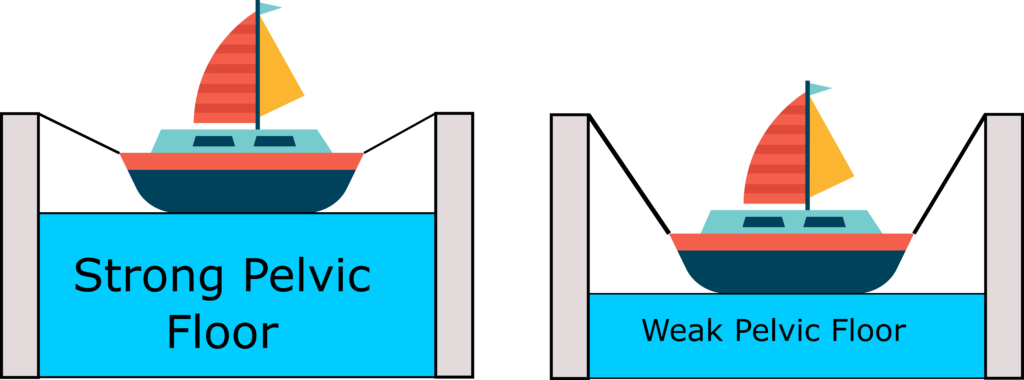What is the Pelvic Floor?
The pelvic floor is a series of muscles and ligaments that surround the pelvic organs. Located within the pelvis, the pelvic floor contains layers of muscles and tissue that support and surround the pelvic organs. This includes the bladder, bowel and uterus (or prostate gland for men).
What Does the Pelvic Floor Do?
The Pelvic floor works behind the scenes and plays a supporting role for our bladder, bowel, uterus or prostate. When the pelvic floor is strong, it prevents common problems such as:
- Incontinence (urine leakage)
- Prolapse
The Pelvic Floor contains a series of muscles that can be strengthened or weakened just like your bicep or tricep
Although you may not seem them every day, your pelvic floor muscles are just like any other muscle in your body like your triceps or biceps. They can be strengthened thru exercise programs. They can also be weakened if they are subjected to trauma (birth of a baby or chronic coughing).
To better understand how the pelvic floor supports your organs, imagine a sail boat suspended in water tied out on both ends. The sailboat represents your pelvic organs (bladder, bowel, uterus or prostate gland). The water and ropes represent the pelvic floor.
Imagine yourself as a boat tied onto a dock...

Boat = Pelvic organs (bladder, bowel, uterus)
Ropes = Fascia/ligaments suspending organs within the pelvis
Water = Pelvic floor muscles
The pelvic floor muscles are positioned inside the pelvis, and sit around each “opening” to play a direct role in how we pee, poop, and have sex. After you’ve had your morning coffee and its time to hit the bathroom, you actually relax your pelvic floor muscles and allow your bladder and bowel do its work.
Now on the flipside – when you laugh, jump, cough, or lift at the gym, its your pelvic floor should turn on (contract) to prevent leaks. Men and women who experience pelvic floor dysfunction such as constipation or leakage often have trouble contracting or relaxing these muscles. Yes, it is a very common issue among the general population. No, you do not have to live in fear of having accidents and use pads and diapers the rest of your life!
Strong Pelvic Floor
- Has sufficient water levels to support the sail boat, little to no strain is being placed on the lines tied into the dock
- Adequate strength means that the bowel, bladder, and uterus are properly supported and you are continent
Weak Pelvic Floor
- Does not have sufficient water levels to support the sail boat. Strain is put on the lines and causes the sailboat to sink
- Inadequate strength causes the bowel, bladder, and uterus to drop, and may include symptoms of urinary or fecal incontinence or pelvic heaviness
- Increase risk for pelvic floor dysfunction, including incontinence and pelvic organ prolapse



